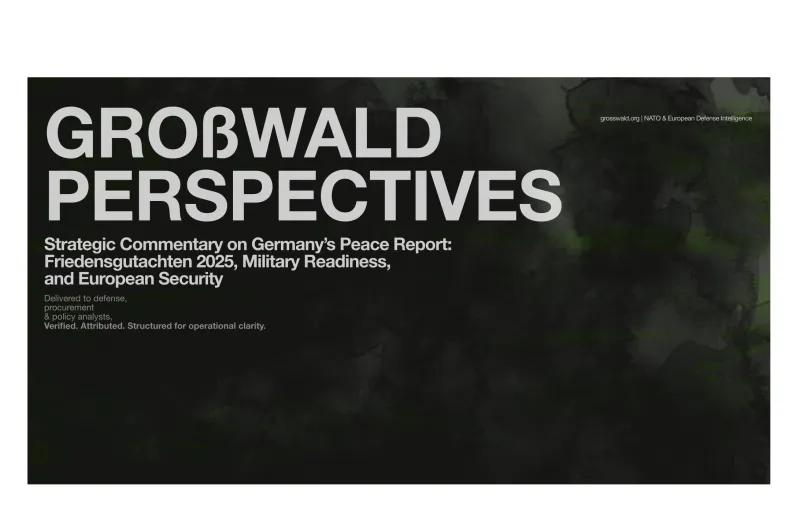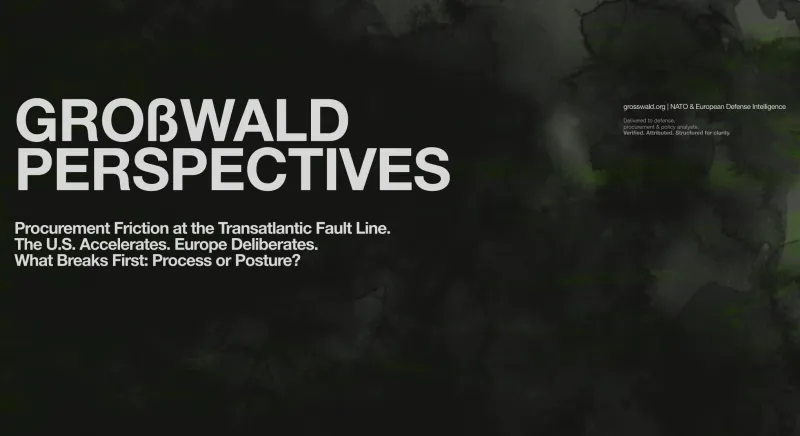China’s Global Security Initiative
Infrastructure Without Conditionality, Norms Without Alliances
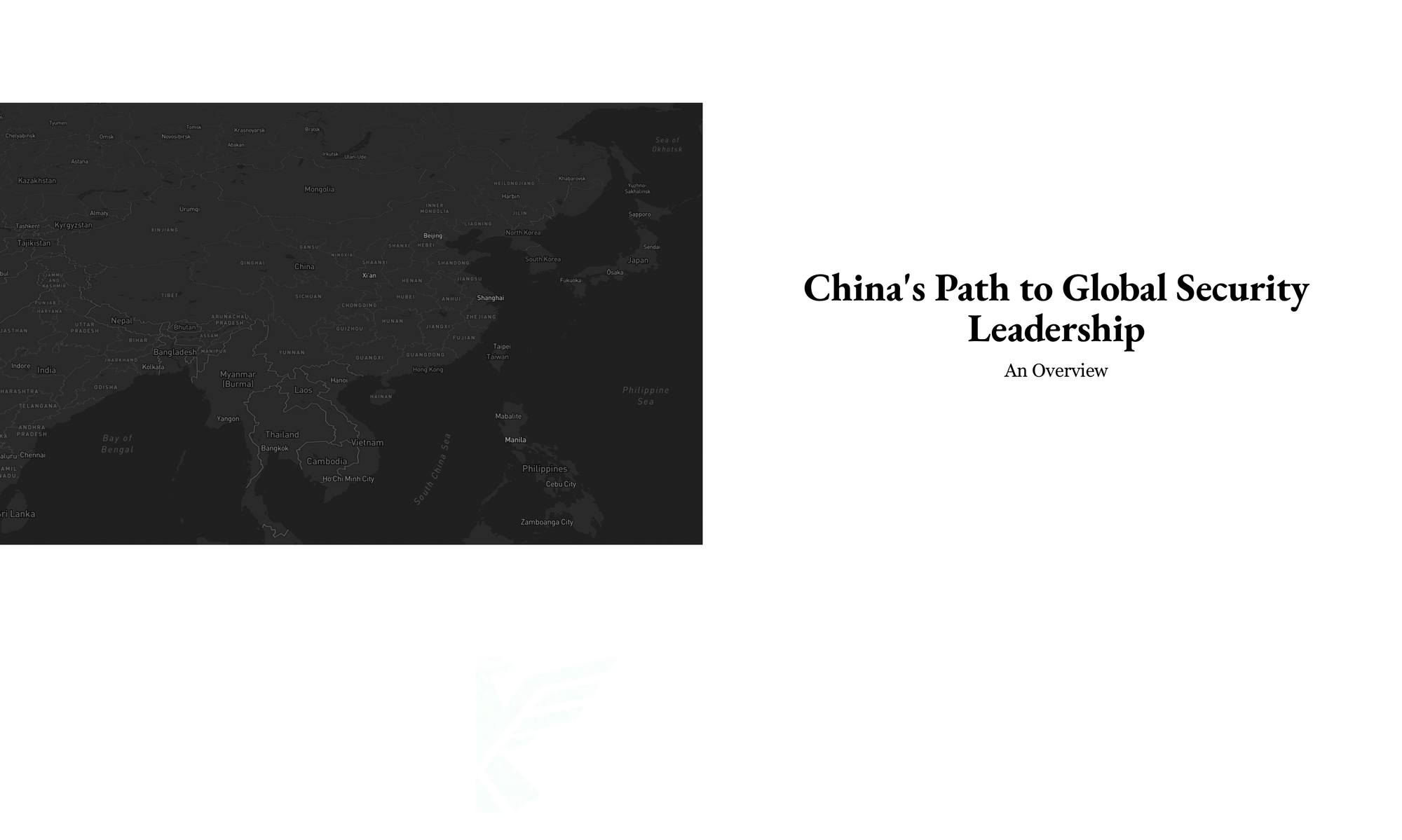
Strategic Erosion from the Periphery In
China’s Global Security Initiative (GSI) rarely features in Europe’s defense discourse. That omission is no longer tenable.
The GSI does not rival NATO or the EU on conventional terms. It offers no mutual defense clause, no interoperability roadmap, no alliance architecture. Instead, it provides something structurally distinct: modular internal security support—surveillance, police cooperation, digital infrastructure—delivered through bilateral channels, on host-country terms.
It is precisely that model—scalable, flexible, and decoupled from normative prerequisites—that is gaining traction. Not in China’s neighborhood, but in Europe’s strategic periphery:
- In Moldova and Georgia, where EU alignment lacks institutional depth, Chinese security technologies are quietly embedding.
- In Serbia and Bosnia, Huawei-built systems outpace EU regulatory mechanisms on digital governance and procurement oversight.
- In the Sahel and Red Sea corridor, as European missions falter and France retrenches, China moves in with offers the EU cannot yet replicate.
To be clear: Europe is not absent. EEAS missions, capacity-building programs, and regulatory export controls are all active. But these instruments are structurally mismatched to the type of demand shaping security partnerships in transitional or hybrid regimes.
The risk is not that China “wins” by coercion or ideological export. The risk is that it becomes the default offer—not because of what it stands for, but because of what Europe structurally fails to provide: a coherent, deployable model of internal security cooperation that is both politically acceptable and operationally ready.
Conceptual Lens — GSI as Platform: Control Without Integration
Launched in 2022, the Global Security Initiative is neither a doctrine nor an alliance. It is a platform architecture—an exportable model of internal security built around control, not cooperation; sovereignty, not interoperability.
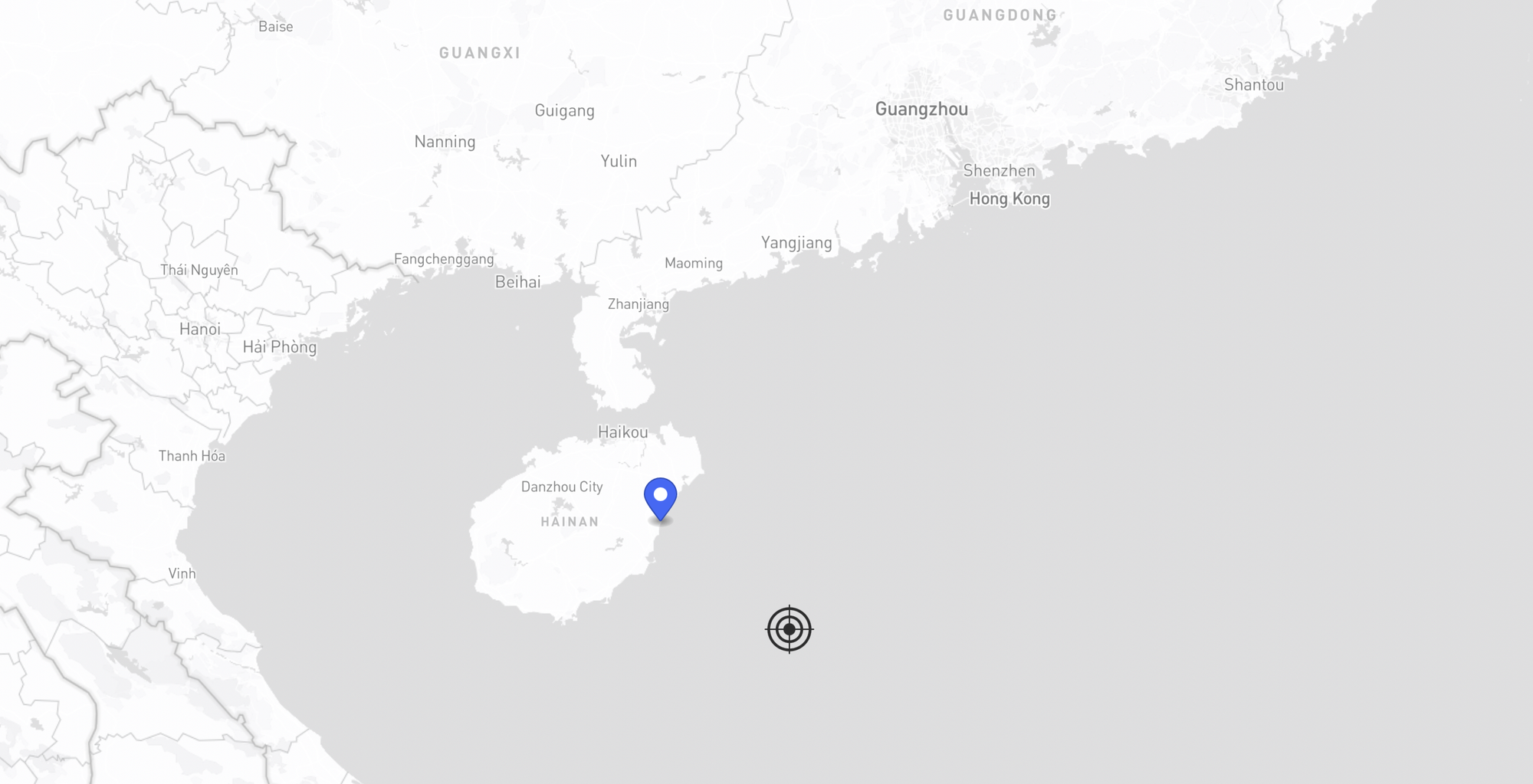
Where Euro-Atlantic security frameworks emphasize reform benchmarks, joint standards, and values alignment, the GSI inverts the logic:
- No conditionality
- No political alignment
- No interoperability required
Instead, the GSI functions as a three-tiered delivery system:
- Technology Stack: Surveillance platforms, AI-powered analytics, and command systems provided by firms like Huawei, Hikvision, and Dahua.
- Institutional Layer: Embedded training, cybercrime cooperation, and policing doctrine aligned with regime priorities.
- Normative Core: A governance model that prioritizes regime security and non-interference, not civil rights or institutional pluralism.
The GSI’s strategic utility lies in its adaptability, not alignment. Its modules can be deployed without treaty obligations, scaled outside multilateral structures, and maintained without formal interoperability. It is not designed to foster integration—but to deliver security infrastructure on partner-defined terms, regardless of regime type.
As such, the GSI is not a direct competitor to the European model—but a situational substitute in environments where the EU’s conditional frameworks prove too slow, too fragmented, or politically mismatched. Over time, its normalization risks redefining the terms of security cooperation along Europe's outer rim—less about reform, more about deliverability.
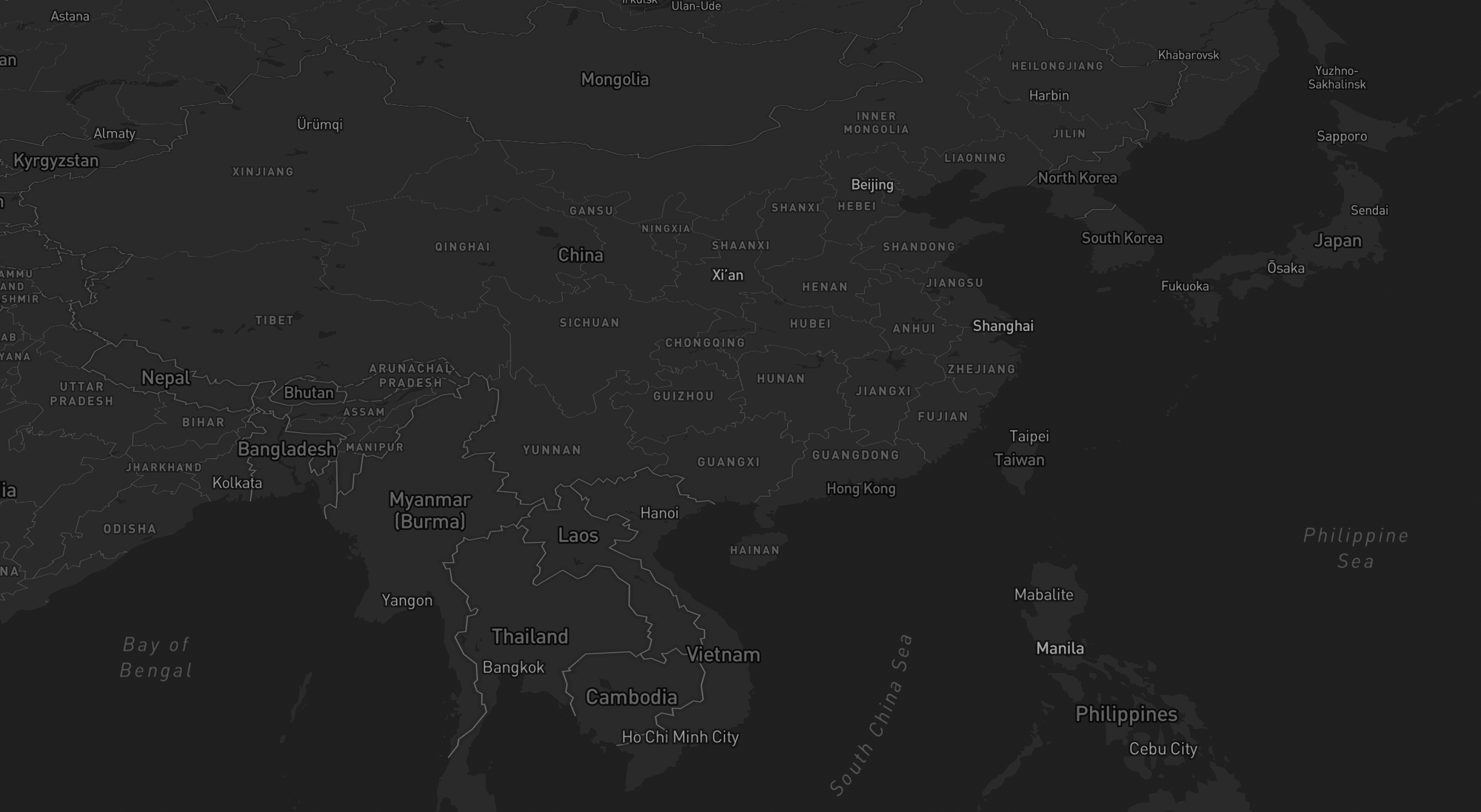
Großwald Perspectives: China’s Global Security Initiative
Infrastructure Without Conditionality, Norms Without Alliances
1 | The GSI Stack: Technology, Institutions, and Norms
The Global Security Initiative is built for replication, not alliance. Its architecture is modular by design: countries opt in by adopting components—technical, institutional, or legal—without needing to commit to alignment, integration, or transparency frameworks.
Rather than exporting a unified doctrine, China offers a governance toolkit. Its components:
- Technical Layer
Export of turnkey surveillance and policing systems—from real-time facial recognition to AI-enabled video analytics and emergency command centers. Providers include Huawei, Hikvision, and Dahua, whose platforms are embedded in urban infrastructure, often with long-term service contracts and opaque data protocols. - Institutional Layer
Bilateral police cooperation agreements, joint training programs, and embedded advisors. These arrangements reinforce state capacity without requiring reform benchmarks or oversight, appealing to governments under pressure to deliver public order or anti-crime results quickly. - Normative Layer
A foundational logic of sovereignty-first security. China’s partnerships emphasize non-interference and regime-defined stability, positioning internal security as a matter of national governance rather than international concern.
This configuration does not require interoperability with other actors. It scales horizontally—kit by kit, city by city, sector by sector—and remains operable even in jurisdictions where political alignment with China is absent or ambivalent.
What emerges is not a bloc, but a distributed infrastructure of quiet entrenchment. It does not declare itself—but over time, it alters the operational norms of internal security management wherever it takes root.
2 | Strategic Drivers: Push and Pull in Symbiosis
The Global Security Initiative is driven by a convergence of internal incentives in Beijing and external demand across diverse regions. Its expansion is not accidental—it reflects a strategic fit between China’s external positioning and the unmet security needs of many states.
Push Factors — Externalizing the Governance Model
From China’s perspective, the GSI serves three parallel aims:
- Securing Overseas Interests
As Chinese investments and citizens expand globally—particularly via the Belt and Road Initiative—so does the imperative to build risk management infrastructure abroad. The GSI offers state-to-state channels for police cooperation, facility protection, and rapid response coordination. - Normalizing Domestic Security Concepts
By embedding Chinese-style public security systems overseas, Beijing subtly validates its own internal model. The more widely adopted these tools become, the less exceptional its domestic governance appears in global forums. - Industrial Expansion
GSI also operates as a foreign market accelerator for China’s surveillance-industrial base. Firms like Hikvision and Dahua benefit from state-facilitated access to high-growth environments. Their deployments abroad double as proof-of-concept platforms and long-tail service revenue pipelines.
Pull Factors — Demand for Flexible, Rapid Security Solutions
The adoption of GSI-aligned systems is often viewed through a binary lens: authoritarian consolidation versus democratic rejection. In practice, the drivers are more heterogeneous, and the institutional contexts more layered.
For some governments, GSI cooperation clearly serves internal political objectives—surveillance concentration, procurement opacity, or repression of dissent. In others, it responds to acute security needs—urban crime, transnational trafficking, digital vulnerabilities—where Western offers are perceived as slow, fragmented, or politically costly.
In many cases, adoption reflects pragmatic hedging: a desire to diversify external dependencies, gain leverage in EU or NATO negotiations, or simply access deployable capability without entering a values-based framework. These decisions may be driven by national security concerns—or by elite political calculus aimed at consolidating influence, even in nominally democratic systems.
These distinctions matter. Not all GSI recipients are authoritarian.
Not all cooperation reflects strategic alignment.
And not all divergence from EU-led frameworks should be mistaken for rejection of Europe.
Recognizing this spectrum is essential. Without this clarity, Europe risks misinterpreting tactical decisions as geopolitical drift—and mistaking misalignment for defection.
Governance Pressure Without Capacity
Many governments face mounting internal security challenges—urban violence, transnational trafficking, cyber intrusion—while operating under fiscal constraints, fragile institutions, or contested legitimacy. Building bespoke security systems from scratch is rarely feasible. Chinese offerings provide ready-to-deploy infrastructure, often backed by concessional finance and long-term support agreements.
Contrary to the Chinese approach, EU and NATO security instruments often come bundled with fragmented oversight, multi-actor coordination demands, or limited implementation bandwidth—factors that reduce their appeal when time, control, and delivery speed are paramount.
- In Kenya, rising urban crime and overstretched police forces led Nairobi to adopt Huawei’s “Safe City” system in 2015. The project bundled thousands of surveillance cameras with centralized monitoring, analytics, and emergency coordination—all delivered faster and more affordably than comparable Western packages. Crime statistics improved, but oversight and data access remained opaque.
- In Pakistan, GSI-linked support has included Chinese-built policing infrastructure in Balochistan to protect CPEC-related assets—blending domestic stabilization with geoeconomic interests.
Security Without Political Sequencing
For governments that cannot—or choose not to—engage with EU or IMF governance benchmarks, including those navigating volatile domestic environments or fragmented state institutions, China’s offer is attractive not because it avoids reform, but because it does not require political sequencing.
European frameworks tend to front-load conditionality—judicial reforms, human rights compliance, and institutional restructuring—before enabling deeper security cooperation. The GSI, by contrast, delivers operational capabilities first, allowing governments to address acute risks without passing through a normative gate.
This is not necessarily a rejection of reform. Rather, it reflects a different ordering of priorities—where stabilization, deterrence, or regime consolidation is treated as a precondition for transformation, not its outcome.
- In Zimbabwe and Cambodia, GSI-style deployments have followed a pattern: rapid installation of surveillance and communications systems, supported by police training agreements, without prerequisites on governance reform or rights guarantees.
- In Serbia, Huawei infrastructure powers Belgrade’s public surveillance system, while procurement and data protocols remain shielded from EU oversight. Serbia is a formal EU candidate, yet continues to deepen GSI-type cooperation—a clear indicator that political alignment does not equate to security-policy convergence.
Technical Monoculture as a Feature
GSI-aligned packages are vertically integrated: surveillance hardware, software platforms, data storage, and operator training are often delivered by a single vendor. This minimizes friction and deployment time, but also reduces long-term adaptability and increases dependency. In fragile or transitional states, the immediate appeal of a single-provider solution often outweighs concerns about interoperability, transparency, or future procurement leverage.
These arrangements often embed long-tail dependencies—creating not just technical lock-in, but ongoing service, data management, and vendor-advisor presence that further entrench China's operational footprint.
- In Laos, a single Huawei-backed Safe City package was installed in Vientiane with minimal local customization—hardware, software, and training provided end-to-end. The result: fast deployment, but complete dependence on Chinese tech and architecture.
- A similar pattern emerged in Ecuador, where Hikvision systems were installed nationwide with Chinese credit, creating long-term contractual and maintenance reliance on a single supplier. While the EU has offered cybersecurity frameworks and transparency instruments, it has not matched this level of turnkey deployment speed.
What binds these dynamics is not ideology, but functional asymmetry. China offers immediate deployment with minimal procedural friction. Europe, by contrast, offers structured cooperation—built around standards, oversight, and institutional alignment. The result is a divergence not of values, but of deliverables—and that difference is shaping outcomes.
3 | Europe’s Blind Spot: Speed, Sovereignty, and Strategic Displacement
The Global Security Initiative does not compete with the EU on ideology or values—it competes on fit and delivery. Where Europe builds partnerships around reform, interoperability, and normative alignment, GSI offers state-ready systems that bypass these requirements entirely.
This asymmetry manifests across five dimensions of structural displacement:
Narrative Shift
GSI reframes internal security as a matter of regime preservation and sovereign functionality—not democratic resilience or rights-based governance.
By contrast, the EU’s strategic communications still frame security cooperation within a peacebuilding or democratic transition paradigm—visible in tools like the Strategic Compass or EU Global Strategy, which emphasize civilian-led stabilization and governance reforms.
Doctrinal Undercut
GSI delivers operational systems without requiring partner states to align with EU security doctrines or benchmarks.
By comparison, EUCAP missions in the Sahel or CSDP training operations in Georgia and Mali often tie security cooperation to governance reform and human rights safeguards—limiting speed and uptake in environments where regime survival is the priority.
Export Control Friction
China’s surveillance-industrial base operates outside the EU’s dual-use and data protection frameworks, enabling the export of turnkey surveillance ecosystems with minimal oversight.
European firms face constraints under the EU Dual-Use Regulation, while political and regulatory environments shaped by GDPR create friction even in partner states—limiting Europe’s ability to offer viable, fast-deploying alternatives in the internal security domain.
Diplomatic Asymmetry
China’s bundled GSI deployments create embedded relationships through technical services, while the EU continues to rely on advisory, fragmented engagement.
For example, despite the Instrument for Pre-Accession Assistance (IPA III), many Western Balkan states receive security-sector reform support that is light on operational deliverables and heavy on administrative sequencing—often too slow to compete with bilateral Chinese offers.
Multilateral Bypass
GSI’s bilateral delivery model erodes the EU’s preference for collective, rule-based approaches to security cooperation.
In Montenegro, Serbia, and Bosnia, GSI-aligned systems enter through bilateral government agreements, bypassing the multilateral frameworks the EU has spent two decades trying to institutionalize—particularly in the context of ENPand Berlin Process coordination platforms.
Europe’s strength remains its normative credibility—but in high-pressure environments, presence often matters more for local decision makers than principle.
When delivery falters, and reform conditions precede stabilization needs, partner states will gravitate toward actors that respond within their operational tempo.
4 | Case Studies: From Peripheral Uptake to Core Proximity
Kenya — Surveillance as Infrastructure
Huawei’s “Safe City” system, deployed in Nairobi in 2015, combined thousands of cameras, centralized monitoring, and predictive analytics. Crime metrics improved. But the system’s long-tail dependencies—vendor-controlled infrastructure, opaque data chains—raise sovereignty concerns. Kenya remains a Western security partner, yet GSI tools dominate its policing backbone.
Tajikistan — Border Security in Russia’s Absence
Chinese-funded outposts, patrol drones, and surveillance networks now dominate critical border zones. Once managed by Russian forces, these corridors increasingly reflect Beijing’s security logic: asset protection, Xinjiang buffering, and limited transparency. GSI here functions as vacuum-filler, not ideological export.
Italy — Boundary Testing Inside NATO
In 2022, informal Chinese “police service centers” operated across Italian cities—ostensibly to support Chinese citizens abroad. Their quiet installation, and eventual closure following public and parliamentary scrutiny, revealed both the reach of GSI-style deployments and the lack of policy guardrails inside liberal democracies.
5 | Strategic Implications for the EU & CEE Defense Posture
The strategic implications of GSI’s uptake are not about replacement, but redefinition. As Chinese security infrastructure becomes embedded, it alters the reference point for what internal security cooperation entails—especially in the EU’s adjacent spaces.
- Doctrinal Friction
GSI normalizes a model of internal security that prioritizes stability and sovereignty over liberal institutionalism. This complicates EU efforts to promote values-based security through CSDP, EUCAP, or enlargement-linked missions. - CEE Operational Divergence
In countries like Serbia, Montenegro, and Georgia, EU alignment on paper increasingly coexists with Chinese technical baselines in surveillance, infrastructure, and policing. These mixed architectures reflect divergence in practice—even where political alignment persists. - Limited Normative Uptake
Europe’s transparency-centric policing models face low uptake where governments prioritize speed, authority projection, or visible control. This does not imply rejection—but signals limited resonance under operational pressure. - Functional Rebalancing
In several contexts, cooperation with China does not replace Europe—it offsets it. Not as a geopolitical shift, but as a response to perceived delivery asymmetries, procedural friction, or conditional timelines that do not match domestic constraints.
6 | Outlook — Europe’s Options in a GSI World
The Global Security Initiative is not designed to compete with NATO. Its effects are subtler: it reconfigures expectationsaround how internal security assistance is delivered, sequenced, and sustained.
To remain relevant in contested or transitional environments, European actors may need to adapt by offering:
- Modular, sovereignty-compatible security packages with clearer delivery timelines
- Operational alternatives to vertically integrated Chinese systems, built around open architecture and lifecycle support
- Flexible cooperation formats that accommodate security-first sequencing while maintaining reform pathways
The challenge for Europe is not ideological—it is structural.
Without tools that align with partner state timelines, resource constraints, and governance conditions, the EU will struggle to remain the default provider of internal security capacity in its extended neighborhood.
GSI’s influence stems not from alignment, but from availability.

